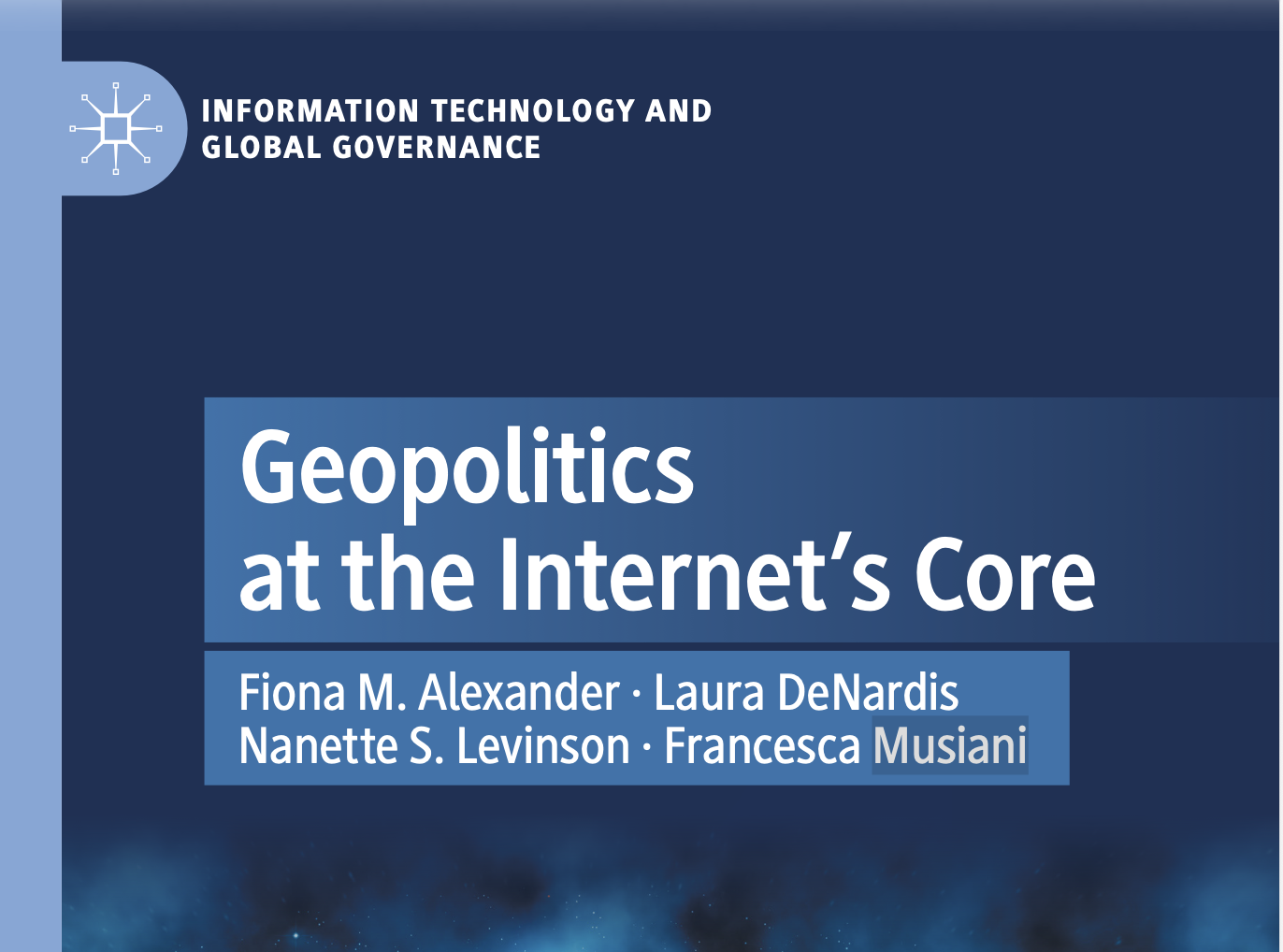At first glance, Geopolitics at the Internet’s Core (Amazon affiliate link) by Fiona M. Alexander, Laura DeNardis, Nanette S. Levinson, and Francesca Musiani reads as a dense technical history of Internet Protocol—that constellation of technical specifications and social agreements that makes the internet work. But this would be a profound misreading.
What Alexander, DeNardis, Levinson, and Musiani have actually written is something far more elegiac: a cenotaph for a bygone era of consensus and freedom, created by the nerds who midwifed the internet into existence.
The Hidden War
Beneath the surface of our everyday digital lives, a quiet war rages over the technical specifications of the internet. This conflict plays out in regulatory bodies and standards-setting organizations, and it disturbingly mirrors—sometimes even precedes—kinetic conflicts in the physical world. Chinese feints, European collective action problems, wild swings in US power and support for allies, Russian criminal activity: the politics of internet governance function as a preview of coming attractions.
For those of us embedded in this world, one of the book’s most fascinating revelations is the documentation of Chinese attempts to shift standards-setting from the IETF (Internet Engineering Task Force) to the ITU (International Telecommunication Union). This isn’t just bureaucratic musical chairs. It’s a deliberate strategy to move the locus of control from a body that operates on “rough consensus and running code” to one that is essentially moribund. I think the motivation here is clear: institutional deadlock opens the global game for subversive disruption.
From Borderless Bits to Westphalian Internet
There is a fundamental mismatch between borders and bits—between the laws governing political entities and the decentralized, cross-border way information actually flows. I’ve discussed this before when the state government of Montana tried to ban TikTok. The book traces how this tension has evolved from an idealistic dream of a universal internet to our current reality: an increasingly fragmented network where the internet looks different depending on what country you’re in.
Rather than the “three internets” framework I’ve previously argued for, the authors make a more powerful—and more pessimistic—case: we are walking backwards toward a Westphalian internet. Nation-states are reasserting sovereignty over digital space, carving up the once-unified network along the same territorial lines that have governed physical space for centuries.
This is the book’s most powerful argument, and it should alarm anyone who cares about the future of global connectivity.
Technical Infrastructure as Political Power
“Technical infrastructure [is] a proxy for political power.” This observation, buried in the book’s analysis of IP address allocation controversies, encapsulates its core thesis. The seemingly neutral technical choices made by engineers—often thoughtlessly, without considering how humans actually wield power—have become battlegrounds for geopolitical competition.
The book excels at translating between two communities that desperately need to understand each other. For policymakers, it demystifies the technology of IP addressing, routing protocols, and internet governance. For technical experts, it explains why politics are happening to the internet, and why the architecture they built is now a contested space.
Where the Book Stumbles
The text does suffer from some repetitiveness, likely a function of its four authors. Multiple similar explanations of 32-bit IPv4 addresses appear throughout, for instance. But these redundancies do less harm than one might expect—they’re speed bumps rather than roadblocks, and it’s an incredibly important concept to understand the rest of the book.
Why This Matters
What makes this book essential reading is its translation work. It bridges the gap between technical and policy communities at a moment when that bridge has never been more critical. The engineers who built the internet’s core protocols made decisions that seemed purely technical at the time. They couldn’t foresee—or chose not to consider—how their architectural choices would become instruments of state power, tools of surveillance, and mechanisms of control.
The book chronicles three major struggles in IP’s history: the foundational battle between TCP/IP and OSI protocols, the expansion struggle over IPv6, and the twenty-year control struggle that ended with the 2016 IANA stewardship transition. Each of these seemingly arcane technical debates actually determined fundamental questions about who controls the internet and how power flows through digital space.
The Stakes
As the authors warn in their conclusion, the societal stakes will only increase as digital networks embed further into humans, objects, financial systems, and medicine. The Internet Protocol has endured for decades through what economists call “long cycles”—extended periods of stability punctuated by turbulent transitions. We may be approaching another such punctuation point.
The question isn’t whether the internet will remain important. It’s whether it will remain the internet—a single, interoperable network—or fracture into a collection of sovereign digital territories. The geopolitical pressures documented in this book suggest the latter outcome is increasingly likely.
Geopolitics at the Internet’s Core memorializes a moment when the internet’s governance reflected the ideals of its founders: open, decentralized, built on rough consensus. That moment is passing. What comes next depends on whether we heed the lessons this book has to teach.
For anyone working in technology policy, internet governance, or who simply wants to understand the hidden political dimensions of the infrastructure we depend on daily, this book is indispensable. It’s dense, occasionally repetitive, but ultimately necessary. The war over the internet’s soul is being fought in standards bodies and routing tables. This book is your field guide to that battlefield.
Here’s an Amazon affiliate link to the book: https://amzn.to/4oQnmHC

